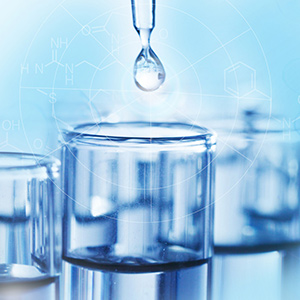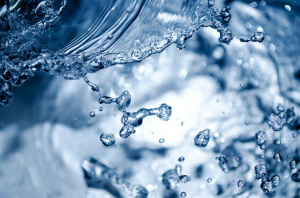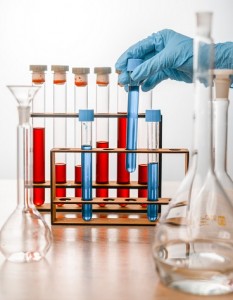Whether the chemical reagents will deteriorate in the storage process depends on internal and external factors, the internal factor is the physical and chemical properties determined by the chemical structure of the reagents themselves; the external factor is the environmental conditions in which the reagents are located.
To achieve proper storage, one must understand the relationship between the structure and properties of reagents, and the other must create an external environment adapted to the storage of reagents.

Causes of chemical reagent deterioration?
Environment mainly refers to the storage temperature, light, and medium. The medium generally refers to the air and mixed impurities. In addition to the oxygen, carbon dioxide, and water vapor contained in the air, the storage room often contains the vapor of various volatile reagents diffused into the air, such as hydrogen chloride, nitric acid, hydrogen sulfide, sulfur dioxide, bromine, iodine, ethylene, formaldehyde, and other vapors; in addition, there are clouds of dust mixed in the air, including inorganic substances and organic substances and various microorganisms.
Chemical reagents will gradually change and deteriorate under certain temperatures and light and medium conditions, and there are physical and chemical changes. The former can cause chemical reagents to lose, while the latter can make the reagents completely deteriorate and fail.
The causes of chemical reagent changes can be summarized as follows.
a. Volatilization
Volatilization is the most common reason for volatile reagents to cause reagent loss, concentration change, and specification decrease. The general characteristics of volatile reagents are: smaller molecular weight and lower boiling point. Common inorganic reagents include: concentrated hydrochloric acid, nitric acid, fuming sulfuric acid, etc. Organic reagents include liquid substances with low carbon atoms, such as methanol, ethanol, petroleum ether, gasoline, etc.
b. Sublimation
A class of reagents with sublimation properties are generally molecular crystals with less heat of Sublimation. In the laboratory, there are generally two kinds of reagents that sublimate at room temperature (such as iodine naphthalene, etc.) and those that sublimate under heat conditions (such as sulfur and mercuric chloride). Sublimation of these reagents mainly causes loss and contamination of air.
c. Deliquescence and dilution
Few chemical reagents can be deliquescent, most of them are soluble compounds, and the general radius of an anion is much smaller than the radius of a cation. There are also anions and cations with similar radii and more charge of cation. Such reagents absorb water on the surface to form a saturated solution. If the water vapor pressure is less than the partial pressure of water vapor in the air, Deliquescence will continue until all the solution is formed. Such as sodium hydroxide, soda lime, etc., and organic materials, such as sodium acetate, ammonium acetate, etc., are susceptible to moisture.
Dilution is when the reagent solution absorbs the moisture in the air, resulting in a decrease in concentration and dilution. Occurrence of the same reason as Deliquescence is the external water vapor partial pressure is greater than the reagent water vapor partial pressure. The common reagents prone to dilution are concentrated sulfuric acid, orthophosphoric acid, ethylene glycol, etc.
d.Weathering
The cause of weathering is the opposite of deliquescence because the partial pressure of water vapor of crystalline hydrate is higher than that of water vapor in the air. The drier the air, the faster the weathering rate.
The common weathering agents in the laboratory are Na2CO3-10H2O, Na2SO4-7H2O, CuSO4-5H2O, MgSO4-7H2O, ZnSO4-7H2O, etc. Although weathering does not affect the chemical properties of the reagents, it changes the appearance of the reagents and reduces their quality.
e. Concentration and crystallization
Concentration and crystallization are caused by the water vapor pressure of the reagent solution being higher than the water vapor pressure in the outside air under the dry environment, resulting in the evaporation of water from the solution and Concentration and crystallization, which are generally found in all kinds of solid solute reagents, especially in some solutions with high Concentration. For some organic substances with low solubility points, precipitation will also occur in the case of a large drop in external temperature. A more obvious example is glacial acetic acid.
f. Hydrolysis
Most of the salts that are easily hydrolyzed have covalent bonds, and all the salts produced by strong acids and weak bases and weak acids and weak bases will be hydrolyzed to different degrees when they meet water. Some metal halides in the laboratory are easily hydrolyzed, such as TiCl4, AlCl3, FeCl3, SnCl2, etc. They are cationic compounds with high charge and small radius or non-inert cationic compounds. Such reagents can be degraded by easy water absorption and Hydrolysis. The easily hydrolyzed organic substances contain acyl groups, such as esters, acyl halides, and other substances.
g. Decomposition
A decomposition reaction is also the cause of initiating and promoting the loss and deterioration of reagents. The decomposition rate of reagents is usually closely related to the ambient temperature. The decomposition rate is accelerated at high temperatures, and usually, binary compounds that are easily decomposed have lower bonding energy. The lower the bond energy, the easier it is to decompose. For example, iodine compounds are more easily decomposed than bromides. Some decomposition reactions are also related to the water content of the reagent, such as ammonium bisulfate. The higher the water content, the faster the temperature decomposition rate. Oxygenates, such as nitrates and permanganates, are decomposed only when heated.
h. Oxidation and reduction
Usually easy to be oxidized if the standard electrode potential is low, with reducing reagents, its name often with “low” or “sub” word. Some active metals and non-metallic monomers, peroxides, and certain organic reagents, such as ferrous sulfate, ferrous ammonium sulfate, sulfurous acid, anhydrous sodium sulfite, sodium, potassium, calcium, zinc powder, reduced iron powder, acetaldehyde and so on. The stronger the reducing reagent is, the easier it is to deteriorate due to oxidation. The oxidation is caused by oxygen in the air and impurities with oxidizing properties.
The standard electrode potential of high reagents, in solid form, usually in the air, is more stable, such as potassium permanganate, potassium dichromate, etc. But when it exists in solution, it is easy to deteriorate with some reducing impurities in the air, such as H2S, SO2, etc., such as KMnO4, Na2S2SO4, K3Fe(CN)6, and other solutions.
i. Non-oxidation – reduction reaction
The deterioration of some reagents does not necessarily cause a change in the valence of the elements, i.e., a non-oxidation-reduction reaction can also render them ineffective. The most common examples in the laboratory, such as quicklime due to absorption of water into slaked lime, further absorption of carbon dioxide and failure; sodium hydroxide and potassium hydroxide solids also due to absorption of carbon dioxide with impurities, if long-term exposure to air is completely transformed into carbonates; in addition, magnesium oxide, barium oxide, barium hydroxide should also be prevented from their reaction with carbon dioxide in the air.
j. Polymerization and condensation
Organic substances with unsaturated double or triple bonds in their molecular structure are prone to polymerization, e.g., formaldehyde solutions often polymerize to produce white trimellitate, and potassium cyanide reagents are also prone to polymerization. Oxygenated acid salt solution with a high charge and small radius of the central ion can precipitate polyacid precipitate due to condensation, such as ammonium molybdate solution can be condensed to precipitate ammonium tetra molybdate, formaldehyde can still be re-released after heating formaldehyde gas, but some reagents, once the polymerization or condensation reaction, often irreversible, resulting in deterioration and failure.
k. Photochemical reaction
Light as a kind of energy can also cause certain reagents to react and deteriorate. An example is the decomposition of silver salts due to light-induced decomposition reactions. Light can also trigger oxidation reactions, such as benzaldehyde being easily oxidized to benzoic acid by air under light, and aniline can change from colorless to brown. In addition, mercury iodide, o-phenylene triol, chloroform, mercury sulfate, potassium ferricyanide, etc., are also susceptible to photochemical reactions.
l. Mildew
The so-called mold refers to mold growth and reproduction in chemical reagents. The dust in the air contains numerous bacteria microorganisms, which can multiply under certain temperature conditions. Carbohydrates in the laboratory, esters, protein reagents, and organic reagents containing nitrogen, sulfur, and phosphorus are good nutrients and breeding grounds for the reproduction of bacteria. As long as the above reagents are not tightly sealed and air contact can occur, mold.
Chemical reagents change for the above reasons. Usually, with the help of color, form, odor, and quantity, an increase or decrease can be detected. In contrast, some changes need to use experimental methods to distinguish, such as: whether anhydrous alcohol contains water, which can only be determined with special reagent standards and test methods. Therefore, scientific storage of various reagents is a careful work with a lot of learning and articles.
How to prevent and mitigate the deterioration of chemical reagents?

To ensure the normal development of chemistry teaching, scientific research, and chemical production, reduce the loss of reagents, and alleviate the deterioration of reagents, the following methods and measures can usually be taken.
a. Sealing
This is the most common and general method. The material and sealing degree of reagent bottles should be determined according to the nature of the reagents. For example, for strong corrosive “three acids” and liquid bromine, reagent bottles with ground glass or glass bottles with screw caps with plastic liners are available. In contrast, hydrofluoric acid should be stored in sealed silver or plastic containers.
Sealing applies to all chemical reagents prone to volatility, sublimation, deliquescence, dilution, weathering, hydrolysis, redox, mildew, etc. For reagents that are prone to decomposition and gas generation, they are generally not completely sealed and should be properly left open. Otherwise, the container may break. In addition to the general seal, you can add a wax seal or seal with homemade nitro tincture, such as aluminum trichloride, phosphorus pentoxide, etc.
b. Isolation
Can and air, water reagents, such as very active metals and non-metals, should be stored in Isolation in the reagent relatively stable liquid or inert gas, potassium, sodium, and calcium submerged in oil, and yellow phosphorus is submerged in water storage. This isolation method is also known as the liquid seal method. And the former is called an oil seal, and the latter is called a water seal. Water-sealed storage can also make certain easily volatile reagents to reduce the loss. For example: in the reagent with liquid bromine, carbon disulfide with a thin layer of water can greatly reduce the loss of volatile and air pollution.
Inorganic and organic reagents in the laboratory are of various types and different natures, so attention should be paid to reasonable classification and storage. Organic and inorganic substances are separated, common drugs and dangerous ones are separated, oxidizers and flammable substances, reducing agents decomposition, volatile acids, and bases are separated. Do these separate? One can avoid the adverse effects of drugs, and two, even if there are accidents, but also avoid drug interaction, producing greater hidden danger.
c. Light avoidance
Usually, use dark brown reagent bottles with good light-shielding performance. Put the reagents in a dark place or a special cabinet with shading. The reagent bottles can also be wrapped with thick black paper of photographic paper, such as concentrated nitric acid, potassium iodide, sodium iodide, and mercury chloride storage is so
d. Low temperature
Common volatile reagents, such as concentrated nitric acid, hydrochloric acid, and ammonia, are often stored in a cool place. Some special biochemical reagents should be stored in water tanks or refrigerators, such as enzyme reagents.
e. Ventilation
Although the containers of chemical reagents are generally sealed, there are inevitable runs, bubbles, leaks, and leaks. In the hot weather in summer, it is more likely to form an explosive gas mixture. Therefore, the storage room must be well-ventilated, and special exhaust fans should be installed and opened frequently to make air circulation.

f. Timely
According to the characteristics of certain reagents, especially some reagents which are easy to deteriorate and fail, appropriate measures should be taken to prepare, use and handle them in time.
For example, hydrogen sulfuric acid solution, chlorine water, bromine water, and iodine water, which are easily oxidized, should be prepared and used in time; silver mirror reaction! Silver nitrate solution, ammonia, and acetaldehyde solution should be used in time to prevent the effect; ferrous sulfate solution should be prepared after the addition of some reduction of iron powder to make it not be oxidized; starch, sucrose, protein solution should be used after the timely cleaning of the reagent bottle to prevent mold.
The reagents, as mentioned above, should be prepared on time, and the quantity should be prepared according to the need to avoid waste caused by excess.
Post time: Mar-02-2023






